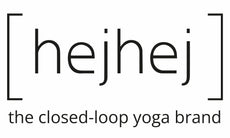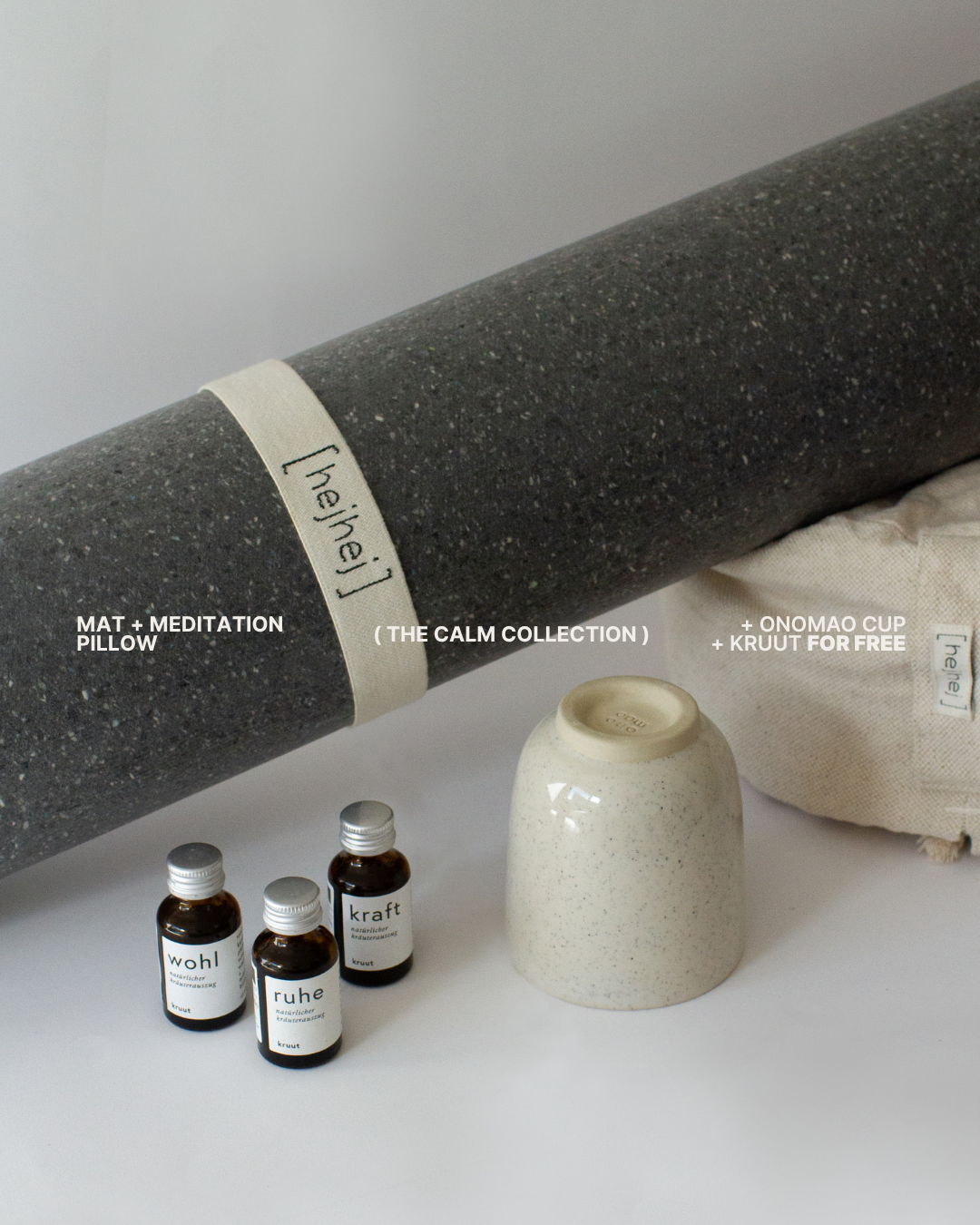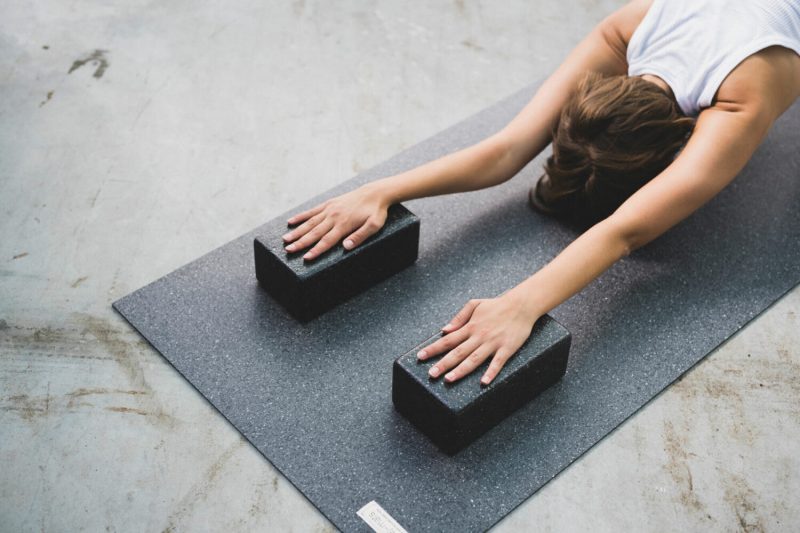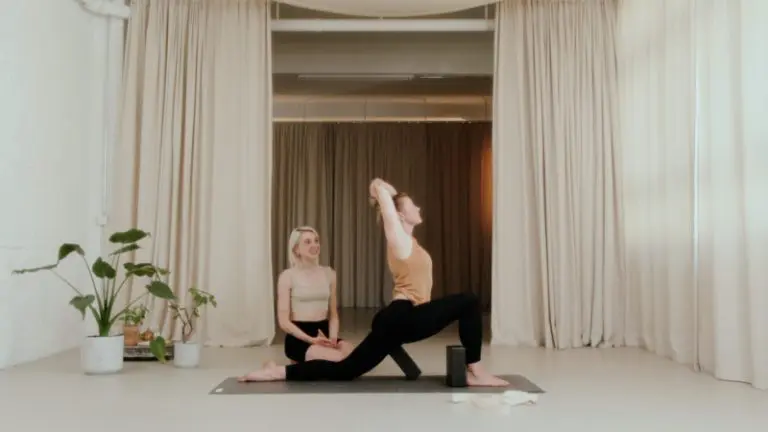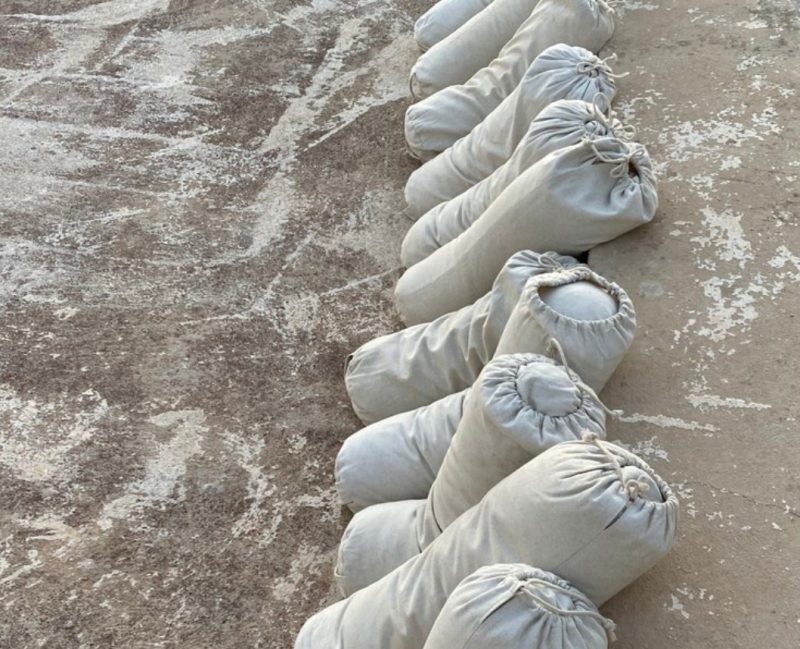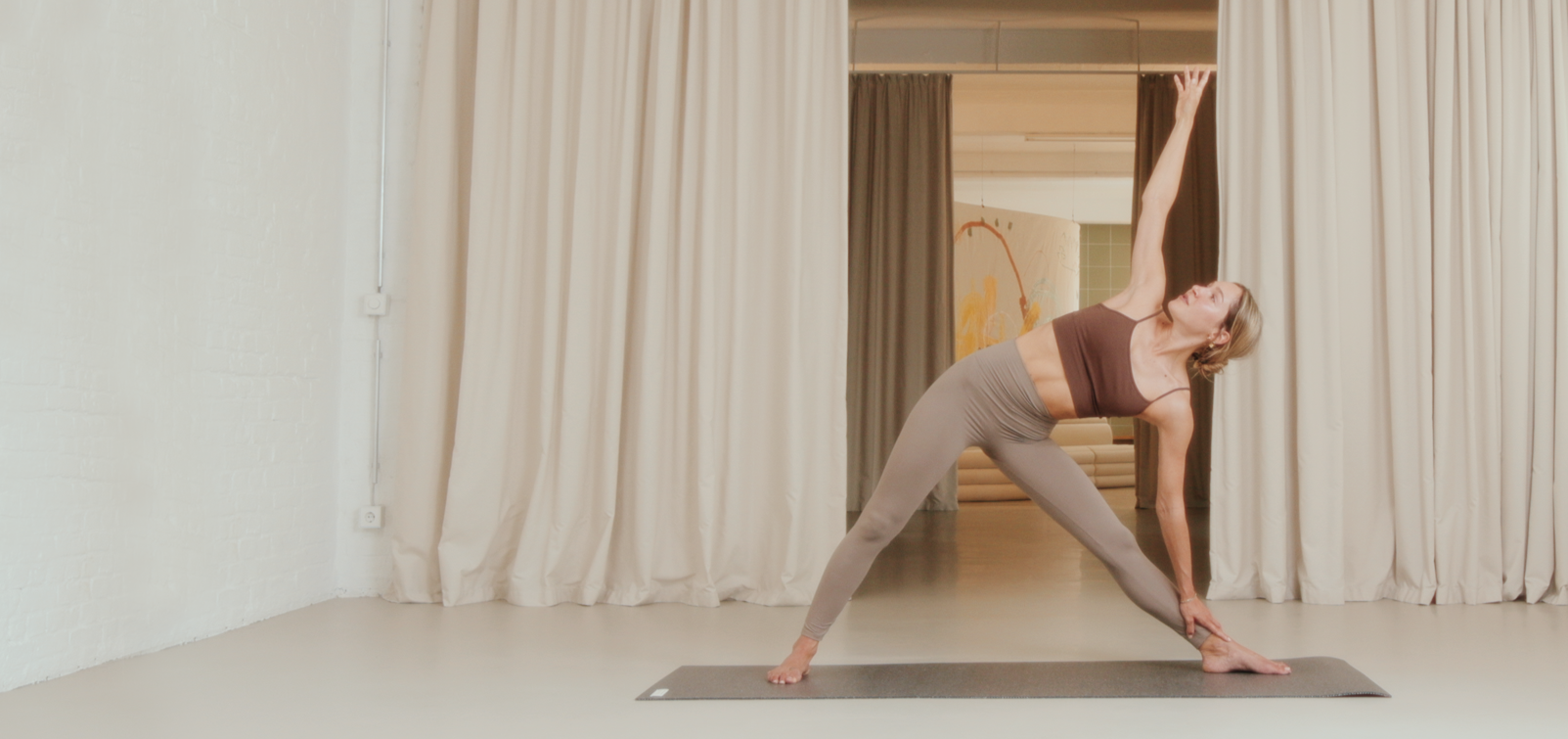For us, the yoga block has become an all-around tool for our yoga practice. It can easily be used in so many asanas. A tool with many applications is a sustainable one for us because it’s versatile and can be used for different types of support. Yoga block for stretches? Here we show you 6 yin exercises that your yoga block can support you in stretching.
In a previous blog article, we have already introduced the yang asanas with the hejhej-block and also went into a little more detail about the specifics of our yoga block. Especially the size and unique slip resistance of the hejhej-block are particularly suitable for these 6 stretching exercises with the yoga block.
The uniqueness of the hejhej-block
Before we introduce you to the exercises, we would also like to share the most special characteristic of the yoga block from hejhej with you. Just like the hejhej-mat, it was designed, with the Circular Economy in mind. The block is made from recycled foam cuttings, with a toy-compliant surface of virgin material covering it. Together, the hejhej-block, just like the hejhej-mat, can be 100% recycled again. You can send it back to us free of charge and we can then use the material again as a resource for new hejhej-mats and hejhej-blocks. No waste of any kind is created on our planet. With this approach, all hejhej products have been designed. The sustainability of the product makes your yoga practice shine even more holistically and you can fully concentrate and enjoy yourself during your stretches with Yoga Block.
Stretches with your yoga block
1. Block variation of the melting heart
Maybe you know this pose as a panther or puppy? In Yin Yoga, however, postures often have different names, so you consciously approach the exercise with a more passive mindset. Start into your Melting Heart, Anahatasana, from the tabletop position, Bharmanasana. Have your blocks handy and slowly move your hands forward on your yoga mat until your arms are extended long and your forehead is resting on the mat. Make sure your thighs stay at 90 degrees to the mat, hips directly above your knees. When you have sunken into your Melting Heart Pose and realize that you want to open your shoulder fronts even more, that you want to create even more space for your upper body, then grab your blocks, place your palms on it and feel how your heart space can open even more, how your heart can melt even more towards the mat. Breathe deeply in and out of this vast space.

2. Swan with block support
To stay comfortable in the swan it is important that your hips are straightforward. Sometimes that’s not so easy – that’s where your yoga block comes in. In the swan, support the floating buttocks with it so that you can sink deeply into your swan without worry. Here’s how to get into your hip opener with block support: get into the dog looking down pose, extend your left leg up first and then pull your left knee forward between your hands in a guided manner and gently place it down. Sink down with both legs on the mat and rest your left buttock on your yoga block. Your torso is erect, your hands are on the mat, the left and right of your hips. When you are safely seated in the Swan, raise your hands over your sides with the inhale to above your head, place your palms together in the Anjali Mudra, and if you like, sink into a slight backbend, lift your chest, inhale and exhale deeply into the front of your body and into your hip area.

3. Advanced variation of the fish
The fish, Matsyasana, is one of the main exercises in Hatha Yoga. If you’re already very comfortable with your fish pose, why not try this variation today with two blocks. Sit upright with your legs stretched out wide, and place the blocks behind you so that you can rest your back on one and your head on the other. You can definitely put the block for the head in the highest position so that your neck can rest relaxed and straight in this posture. This variation is an intense contrast to your everyday postures that take place in front of the body. Open the front of your body and give yourself space for deep breathing and an upright walk.

4. Standing forward bend
Uttanasana is a yoga exercise that certainly finds its place in every lesson. Rightly so, standing forward bends promote stress relief, and stretching of the back and backs of your legs, and can also relieve abdominal pain. Uttanasana is formed from the words uttāna “intense stretching” and āsana “posture. This refers to the back of your body. Some days this intense feeling can be too much or your hands don’t reach the floor and you want stability. Then reach for your hejhej-blocks and place your hands on them. Practice letting go and become aware that this is not about whether your hands touch the floor at all. Your backside will be elongated no matter where your hands are. A beautiful realization, isn’t it?

5. Heart opening child’s pose
In the child’s pose, Balasana, you can really come to rest, drawing your senses inward. From an upright seated kneeling position, Vajrasana, bend forward one vertebra at a time until the forehead sinks to the floor. The arms are usually parallel to the body with the palms facing up. For the heart-opening variation, extend your arms forward, place your two yoga blocks under your elbows, bend your arms, bring your palms together above your head in Anjali Mudra, and see how far you can lower your hands into your neck, toward your shoulder blades. This way you open your shoulder girdle and widen your chest. If you want to take pressure off your knees, feel free to sit on a block or two, this will slightly lift your buttocks and take pressure off your knees and ankles. See how the exercise feels good to you.

6. Challenge in the seated forward fold
Paschimottanasana, the seated forward fold, is an exercise that is often dismissed as easy, while it is incredibly effective and allows for challenges. To do this, sit upright on your yoga mat with your legs stretched out long and your feet flexed. If you want a challenge, put a block on the soles of your feet today. With the inhalation, once again pull your entire spine long, and with the exhalation, sink with the belly button first, from the lower back, with the upper body, the chest, and the forehead, towards the legs. First place your hands next to your legs, remembering the length of the spine with each inhalation and letting the forward bend come from the lower back. Now see if your hands can grip the block under your feet instead of the soles of your feet. Stay here for a few breaths. You have the feeling you would get even further? Next time, why not put two blocks on the soles of your feet and see if you can get a grip on both?

Have fun trying out these stretches with your yoga block!
On our Youtube channel we also have some yoga flows for you, in which the hejhej-block is wonderfully integrated. Yoga flow with blocks – 30 min yoga block workout (English), Katonah Yoga Basics active Class | 30 min (English) or Power Yoga and Meditation | 20 min (German). Have fun actively practising with the yoga block.
Or how about a 20-minute dynamic vinyasa flow with Steffi now?
